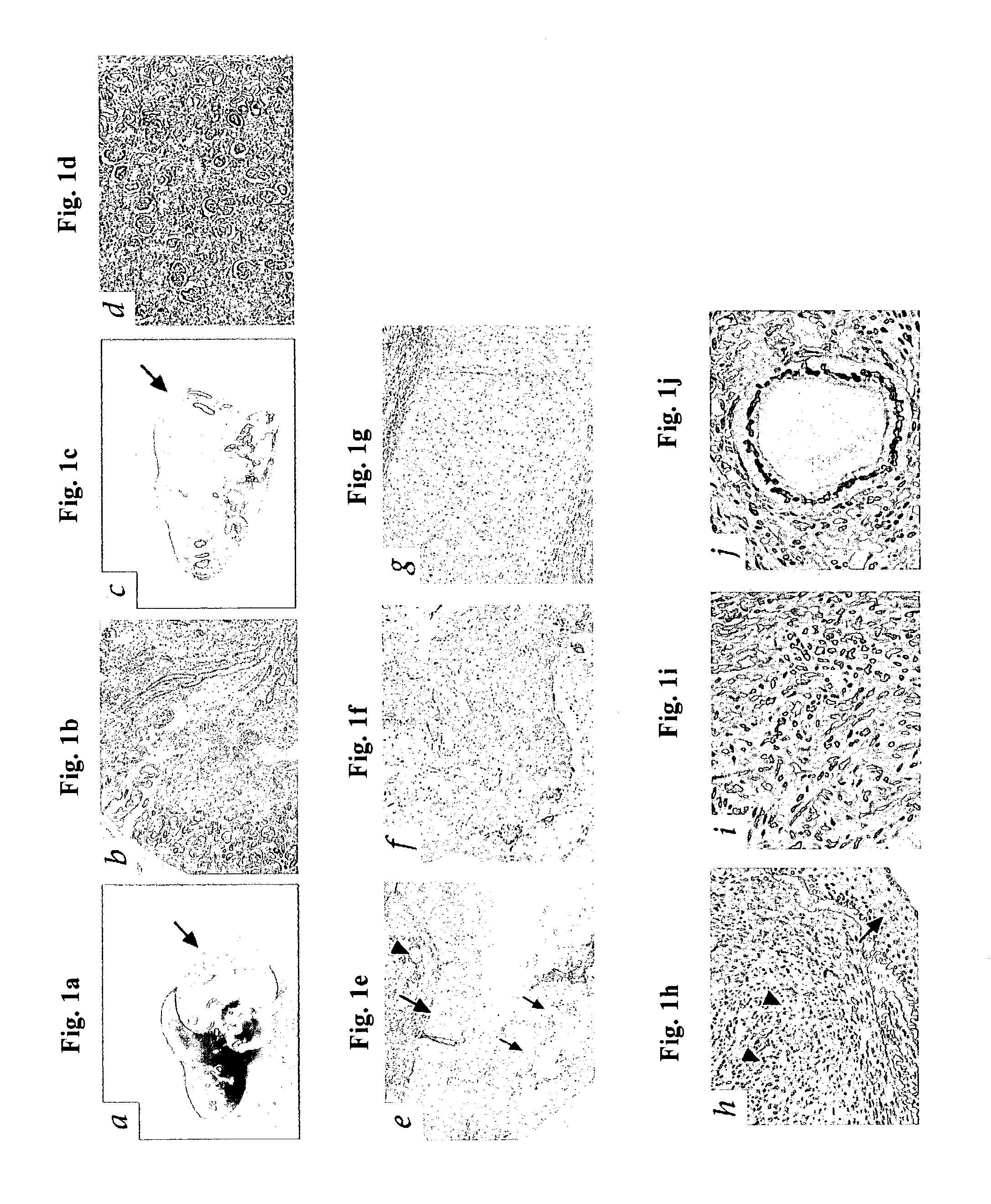Methods of treating disease by transplantation of developing allogeneic or xenogeneic organs or tissues
a technology of developing allogeneic or xenogeneic organs and tissues, applied in the direction of genetic material ingredients, immunological disorders, drug compositions, etc., can solve the problems of limited effectiveness, cumbersome and expensive procedures, and large organ availability
- Summary
- Abstract
- Description
- Claims
- Application Information
AI Technical Summary
Problems solved by technology
Method used
Image
Examples
example 1
Transplantation of Early Gestational Stage Human or Porcine Renal Organs or Tissues Generates Structurally and Functionally Differentiated Renal Organs or Tissues Tolerated by Allogeneic / Xenogeneic Human Lymphocytes
[0224] Diseases of organs or tissues for which allogeneic donor organ / tissue transplantation remains the optimal therapeutic option, such as kidney disease, are highly debilitating and associated with significant mortality rates. However, allogeneic donor organ / tissue transplantation is often impossible to implement due to the difficulty of finding a haplotype-matched organ / tissue donor. Moreover, even when a matched donor is found, in order to prevent graft rejection such transplantation requires permanent graft recipient immunosuppression, usually via administration of toxic inununosuppressant drugs such as cyclosporin A. Such immunosuppressive treatments contribute to the drawbacks of allogeneic transplantation, since these are often unsuccessful at preventing graft re...
example 2
Treatment of Human Renal Disease by Transplantation of Early Gestational Stage Human or Porcine Renal Organs or Tissues without or with Minimal Immunosuppression of Graft Recipients
[0256] As shown in Example 1 of the Examples section above, 7- to 8-week gestational stage human organ / tissue derived grafts, or 20- to 28-day gestational stage porcine organ / tissue derived grafts transplanted into a host are capable of generating structurally and functionally differentiated organs / tissues optimally tolerated by allogeneic / xenogeneic human lymphocytes. In particular, it was shown therein that human or porcine renal transplants at the aforementioned respective gestational stages, exhibit all such capacities, including that of generating urine producing renal organs. Thus, while conceiving the present invention, it was hypothesized that transplantation of human or porcine organ / tissue derived grafts at the aforementioned respective gestational stages, could be used to treat diseases of such...
example 3
Transplantation of Early Gestational Stage Human and Animal Pancreatic into a Host Generates Pancreatic Organs / Tissues Displaying 10 Fold Growth
[0258] As described in Example 1 of the Examples section above, early gestational stage human or porcine organs / tissues transplanted into a host are capable of generating structurally and functionally differentiated, host integrated organs or tissues optimally tolerated by allogeneic / xenogeneic human lymphocytes. Thus, while conceiving the present invention, it was hypothesized that transplanting early gestational stage human or animal pancreatic organs / tissues into a host will generate pancreatic organs / tissues displaying significant development, as follows.
Materials and Methods
[0259] Donor pancreatic tissues: Human 12- to 16-week gestational stage pancreatic tissues were obtained following curettage, with warm ischemia time of less than 30 minutes. After dissection, the pancreatic tissues were kept at 4.degree. C. in UW solution for less t...
PUM
| Property | Measurement | Unit |
|---|---|---|
| time period | aaaaa | aaaaa |
| time period | aaaaa | aaaaa |
| time period | aaaaa | aaaaa |
Abstract
Description
Claims
Application Information
 Login to View More
Login to View More - R&D
- Intellectual Property
- Life Sciences
- Materials
- Tech Scout
- Unparalleled Data Quality
- Higher Quality Content
- 60% Fewer Hallucinations
Browse by: Latest US Patents, China's latest patents, Technical Efficacy Thesaurus, Application Domain, Technology Topic, Popular Technical Reports.
© 2025 PatSnap. All rights reserved.Legal|Privacy policy|Modern Slavery Act Transparency Statement|Sitemap|About US| Contact US: help@patsnap.com



